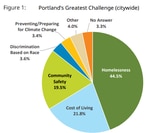
AUSTIN — Every 65 seconds, someone in America develops Alzheimer’s disease, the most common form of dementia. With it comes the average lifetime cost of $392,000.
Advocates are sounding the alarm on the rising cost of care for those with dementia, where the annual average out-of-pocket cost of care is $7,424, more than 10% of household income, according to Alzheimer’s Association data.
Total annual payments for health care and long-term care for people with Alzheimer’s disease or another dementia are projected to increase from an annual cost of $345 billion in 2023 to just under $1 trillion in 2050, said Monica Moreno, senior director of care and support at the Alzheimer’s Association.
Moreno said it is common for caregivers — approximately 11 million nationwide — to reach into their own pockets to pay for expenses, but that has other implications. Caregivers may reduce their own hours of work, limiting how much they are able to bring in and save for retirement, or dip into their savings to pay for their loved one.
“There’s this ripple effect that happens when you talk about care costs because it’s not only the individuals living with the diseases impacted by this, it’s also their families who’re providing that care,” Moreno said.
Insurance coverage
Roughly 6.7 million Americans 65 and older are living with Alzheimer’s disease in 2023, accounting for about 10.7% of people in that population, per national data.
Experts expect that number to rise to about 13 million by 2050, barring the development of medical breakthroughs to prevent or cure the disease, according to Alzheimer’s Association data.
Moreno said insurance options cover some but not all of the expenses associated with the disease.
Medicare on average covers 64% of the total costs related to Alzheimer’s disease. Should one need more professional care beyond what a family member can offer — particularly as the disease progresses into the later stages — Medicare covers up to 100 days in a nursing home facility.
Moreno adds that the average life expectancy of a person diagnosed with Alzheimer’s disease is eight to 10 years, and some may live 15 to 20 years.
Long-term care insurance
Bob Louis, counsel at the law firm Saul, Ewing, Arnstein and Lehr in Philadelphia, has written about a secondary option: long-term care insurance.
Long-term care insurance, like homeowners insurance, is designed to cover long-term services and supports, including personal and custodial care in a variety of settings such as your home, a community organization or other facility.
It reimburses policyholders a daily amount — up to a preselected limit — for services to assist them with activities of daily living such as bathing, dressing or eating, per the Administration for Community Living.
Typically, long-term care insurance is offered as an extension of life insurance policy, but Louis said he has found that few take advantage of that option.
“People don’t think you’re ever going to need it,” Louis said. “We all know that we get sick, and we may have to go to the hospital or go to a doctor. But people seem to think, ‘I’ll never need long-term care,’ and maybe most of them don’t. But for those who do, it’s a lot of money in a very short time.”
Cost of long-term care insurance varies widely based on age and other factors.
A 55-year-old man in the United States can expect to pay a long-term care insurance premium of $2,000 per year on average, according to a 2022 price index survey by the American Association for Long-Term Care Insurance. Initial policy benefit equals $165,000.
Louis said he thinks few have long-term care insurance because it is an added cost without an immediate effect, unlike other insurances.
“Long-term care insurance is not a complete answer, but it’s an answer, honestly, for people at a certain income and wealth level who can afford it,” Louis said. “It’s not an answer for lower-income people because they can’t afford it, and very wealthy people, they don’t need it.
“It’s unlike health insurance, which is really a necessity for people. It’s a luxury; it’s really something that helps you with a problem that you might have,” he added.
Access to information
The Alzheimer’s Association stresses education for families on the potential financial impact of the disease. It has been working for 40 years to push free information to Americans. With 74 chapters across the country, the vast network provides a lot of information to help caregivers and patients, Moreno said.
She said that the organization works to help families prepare for costs beforehand, even if one has not been diagnosed with Alzheimer’s disease, because individuals will still age, and that could bring unforeseen and often steep costs.
“It’s really thinking about what your care needs may be in the future and start putting those plans in place today so that you’re prepared for them,” Moreno said.
Moreno said she still finds there to be a lack of access to information, particularly along racial and socioeconomic lines.
She said this is worrisome because almost two-thirds of Americans with Alzheimer’s disease are women.
Older Black Americans are about twice as likely to have Alzheimer’s disease or other dementias as older white Americans, and older Hispanic Americans are about 1.5 times as likely to have Alzheimer’s disease or other dementias.
She said the organization continues to work to bridge the information gap and help families know there are resources available.
“You’re not alone. No matter where you’re living throughout the country, families don’t have to go through this disease alone,” Moreno said.



